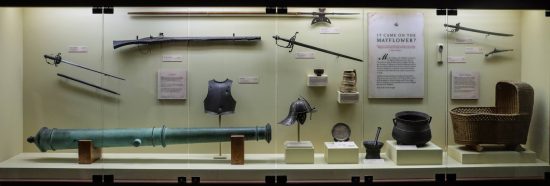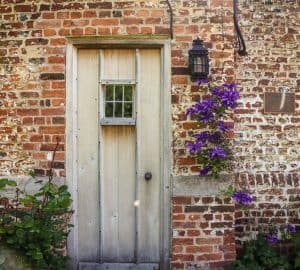
The last post introduced us to the accounts of two attacks by the Nauset Indians on European explorers on Cape Cod just 11 miles and 12 years apart. The first in 1608 was on a French expedition in which five disobedient sailors were massacred by 400 Indians, the second in 1620 win 18 Pilgrims beat off an attack by the Natives. Today we’ll evaluate these two different scenarios, which have both a lot of similarities and a lot of differences.
Forces
Expeditions from two different European nations faced Natives like from the Nauset tribe, possibly including the same people. Over the 12 years, though, many things had changed. The Pilgrim force was smaller than the total of the French expedition, but the Indian band was also smaller, devastated by disease in the “Great Dying” of a few years before. Champlain records 400 Indians, the Pilgrims estimated at least 30-40. The French spent some time with them, and noticed that it seemed that the Nauset were preparing to attack. By 1620 the Indians had had more experience with the Europeans, including violent incidents. This time they would strike before any friendly contact.
Watchfulness
The French party attacked were all but mutineers, disregarding the orders to retire to the safety of the ship. They seemed to be taking no precautions, and were caught completely by surprise. The Pilgrims were also taken by surprise, but they had taken a lot more care – building a barricade and setting a watch. It’s probable that the Nauset had been watching them carefully, and had failed to find an opportunity to strike them during the night. It was only in the morning, with no vigilant watch and the weapons not kept handy in the bustle of loading the shallop and eating breakfast, that they saw their opportunity to strike. Both English and French could be criticized for lack of care in the unknown land, but the Englishmen’s better preparations certainly played a part in their success.
Native Tactics
The Nauset employed similar tactics for both attacks. They attacked in the morning, no doubt after a careful survey of the enemy, choosing the time when the foreigners were the most vulnerable. They moved in stealthily, and unleashed a volley of arrows into the enemy. As we have noted, their difference in numbers between the two attacks was substantial. This certainly played a part in the failure of the strike on the Pilgrims.
Battle
When the French sailors were attacked, with “such a volley of arrows that to rise up was death,” we do not hear that they made any resistance, or stayed where they were, but instead they fled to the ship with cries for help. It’s possible that they did not even have weapons, which would be yet more foolhardy failure to prepare. The English, on the other hand, kept their head as the arrows rained down. Some stayed in position to defend the barricade and their supplies, others to defend the shallop. Those who did not have their weapons handy, hurried to retrieve them, and a branch from the fire was used to light their matches, necessary to fire the guns of the day. Most of the English likely did not have combat experience, but they were led by former English officer Captain Myles Standish. If this skirmish is a fair example, he did a fine job training and preparing the settlers for possible combat in their future.
Result
For the French, of course, the fight was a loss. The five men on shore were all killed, and the Nausets swiftly retired before the reinforcements could arrive from the ship. For the Pilgrims, it was the opposite. They successfully defended themselves from a surprise attack by a force twice their numbers. The Pilgrims attributed this to the deliverance of God, and while we can agree, we can also get a bit more detailed than that. When we compare their victory to the defeat of the French, we can see that although they let down their guard and gave the Indians an opportunity, the English were set up for victory by their careful preparations, their unity of purpose, and the training and/or presence of mind that allowed them to keep their cool in danger. All these factors played a major role in their survival.



